-
CATEGORY ::
- All Seeds /
- All Flower Seeds


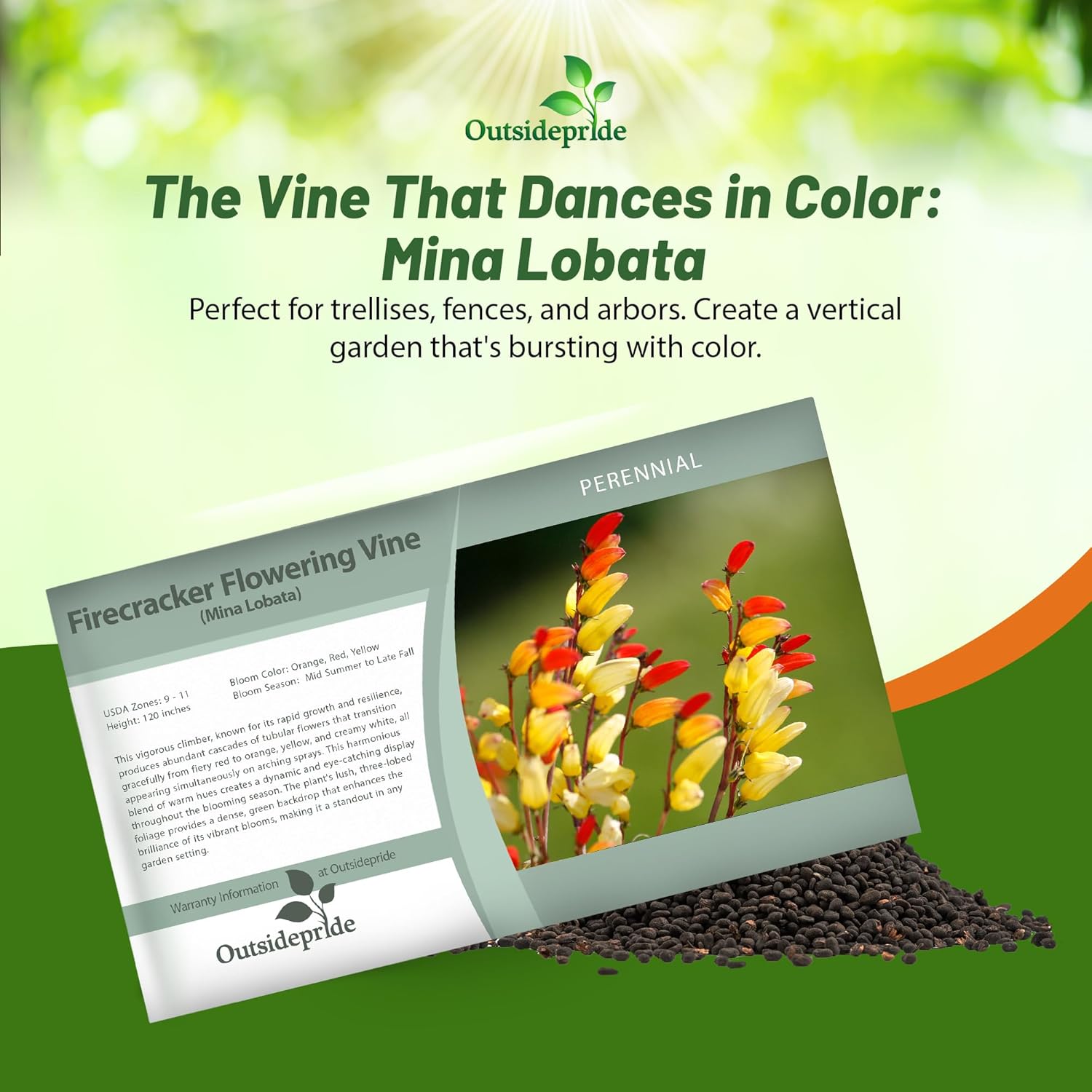

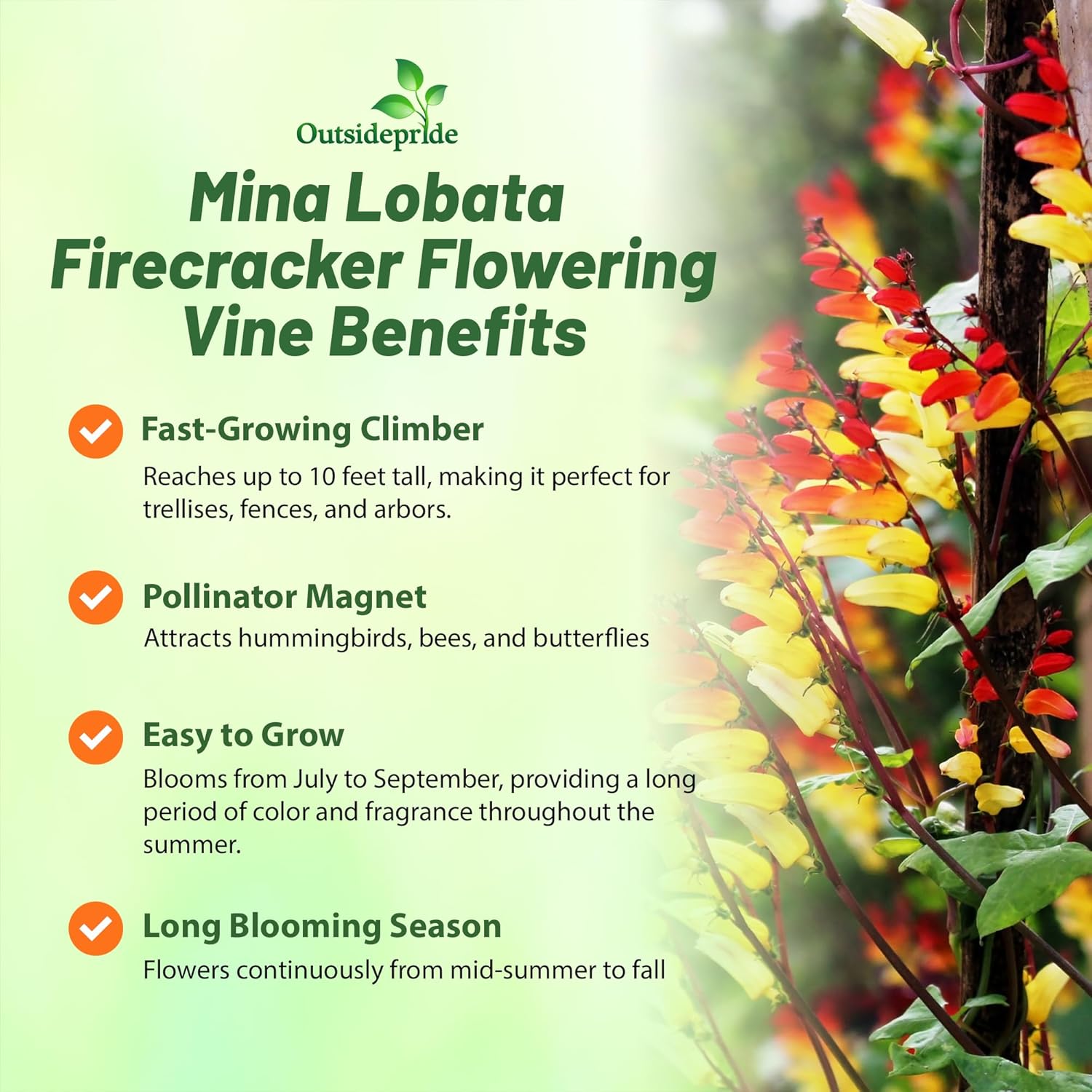





Mina Lobata Seeds
SEASON
Perennial
USDA ZONES
9 - 11
HEIGHT
120 inches
BLOOM SEASON
Mid summer to late fall
BLOOM COLOR
Orange, red, yellow
ENVIRONMENT
Full sun
SOIL TYPE
Sandy, well drained soil, pH 5.5 - 7.5
DEER RESISTANT
Yes
LATIN NAME
Mina lobata
SEASON
Perennial
USDA ZONES
5 - 10
HEIGHT
10 inches
BLOOM SEASON
Spring through winter
BLOOM COLOR
Mix
ENVIRONMENT
Partial shade
SOIL TYPE
Well-drained, pH 6.1 - 7.5
DEER RESISTANT
Yes
HOUSE PLANT
Yes
LATIN NAME
Sinningia speciosa
SEASON
Annual
USDA ZONES
4 - 10
HEIGHT
6 - 8 inches
BLOOM SEASON
Mid spring to late summer
BLOOM COLOR
Mix
ENVIRONMENT
Full sun
SOIL TYPE
Best in rich, well drain soil
DEER RESISTANT
No
LATIN NAME
Leptosiphon hybrida
SEASON
Perennial
USDA ZONES
7 - 11
HEIGHT
28 inches
BLOOM SEASON
Spring to fall
BLOOM COLOR
Rosy purple
ENVIRONMENT
Full sun to partial shade
SOIL TYPE
Well drained soils, pH 6.6 to 7.5
DEER RESISTANT
Yes
SEASON
Perennial
USDA ZONES
7 - 11
HEIGHT
4 inches
WIDTH
12 - 18 inches
BLOOM SEASON
Early spring to early fall
BLOOM COLOR
Pink
ENVIRONMENT
Full sun to partial shade
FOOT TRAFFIC
Light
DEER RESISTANT
Yes
SEASON
Annual
USDA ZONES
3 - 11
HEIGHT
100 - 140 inches
BLOOM SEASON
Late spring to late summer
BLOOM COLOR
Mix
ENVIRONMENT
Full sun
SOIL TYPE
Well drained, pH 6.6 - 7.5
DEER RESISTANT
No
HOUSE PLANT
No
SEASON
Annual
USDA ZONES
4 - 9
HEIGHT
12 inches
BLOOM SEASON
Late summer to early fall
BLOOM COLOR
Mix
ENVIRONMENT
Full sun
SOIL TYPE
Moist, well-drained, pH 6.6 - 7.3
DEER RESISTANT
Yes
SEASON
Annual
USDA ZONES
3 - 10
HEIGHT
12 inches
BLOOM SEASON
Mid summer
BLOOM COLOR
Pink
ENVIRONMENT
Full sun to partial shade
SOIL TYPE
Rich, moist soil, pH 6.6 - 7.5
DEER RESISTANT
Yes
HOUSE PLANT
Yes
LATIN NAME
Mimosa pudica
About...
Firecracker Vine (Mina Lobata) - Start Mina Lobata seeds for this impressive vine that will attract lots of attention. Mina Lobata vine is a tender perennial that is typically grown as an annual. Mina Lobata has many common names: Firecracker Vine, Fire Vine, Spanish Flag Vine, and Exotic Love Vine.MORE FLOWER OPTIONS
Planting Directions
TEMPERATURE
70 - 75F
AVERAGE GERM TIME
10 - 16 days
LIGHT REQUIRED
No
DEPTH
Plant seed 1/4 inch deep
SOWING RATE
Soak overnight in cold water or file a tiny notch in the seed coat bef...more Soak overnight in cold water or file a tiny notch in the seed coat before sowing 1 - 2 seds per plant...less
MOISTURE
Keep seeds moist until germination
PLANT SPACING
12 inches


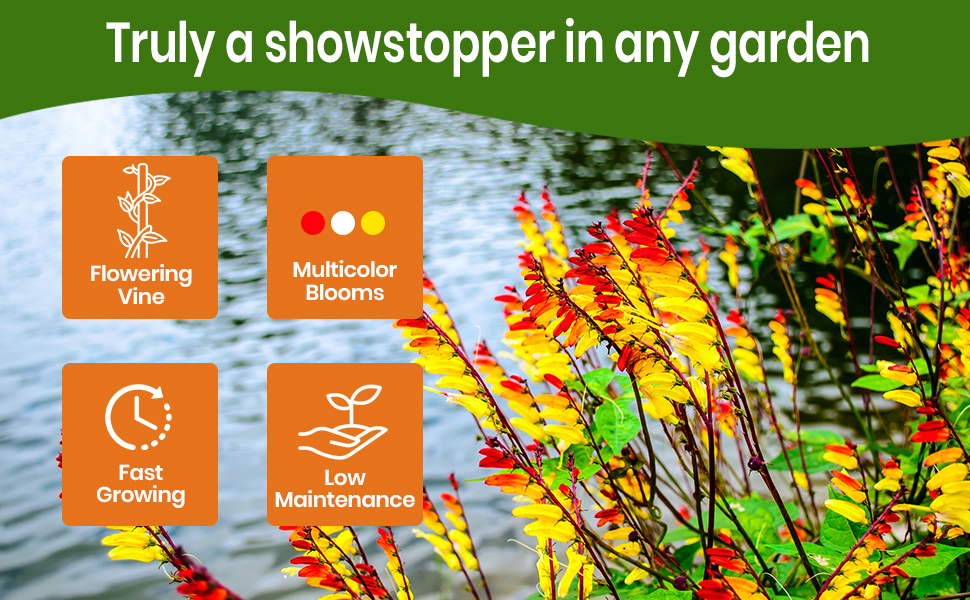

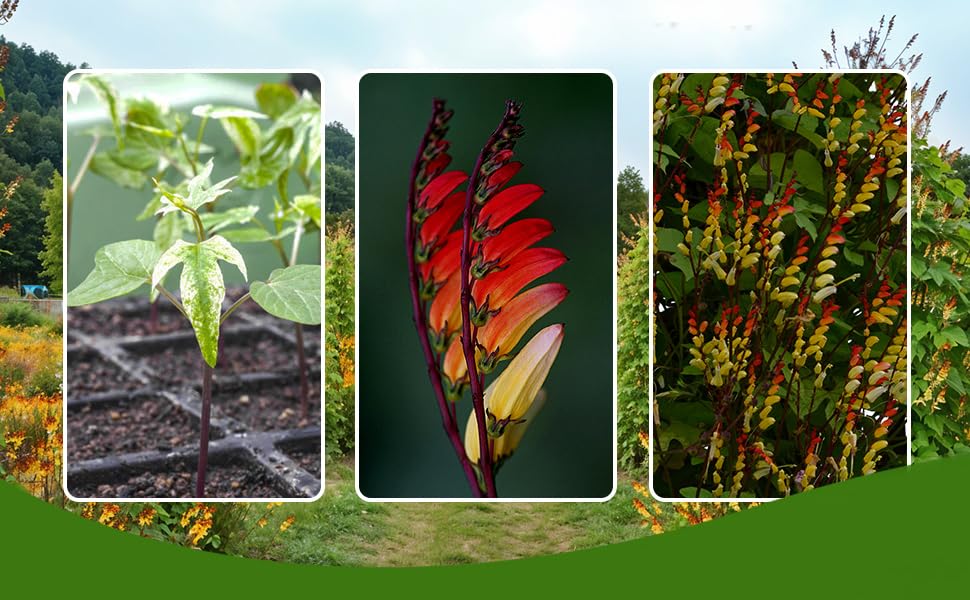

Firecracker Vine (Mina Lobata) - Start Mina Lobata seeds for this impressive vine that will attract lots of attention. Mina Lobata vine is a tender perennial that is typically grown as an annual. Mina Lobata has many common names: Firecracker Vine, Fire Vine, Spanish Flag Vine, and Exotic Love Vine. This plant also has a synonymous botanical name of Ipomoea Lobata. The early Spanish Flag flower is reddish-orange, fading to orange, yellow, and white flowers in mid-summer to fall. This member of the morning glory family produces masses of dazzling 1 - 2 inch tubular flowers that mature and grow on this climbing vine that can reach 10 feet tall. Firecracker Vine has twining stems which are best grown on wire or lattice frames, and when it is in full bloom, it will never be forgotten! Exotic Love Vine Mina Lobata is incredibly showy, and it deserves to be the focal point of your flower garden.
Growing Mina Lobata seed is very rewarding! Soak the seed overnight in warm water or nick the flower seed with a knife to break the outer coat of the seed. For the earliest blooms, start the flower seed indoors. Cover the Spanish Flag plant seeds with 1/4 inch of soil and keep moist. Transplant Mina Lobata seedlings outside after frost danger has passed. Firecracker Vine seeds can also be started directly outdoors in a prepared seed bed once temperatures have warmed in the spring.
Common Questions
Will firecracker vine attract pollinators?
Yes, this flower attracts bees and hummingbirds.
Do I need to fertilize my plants?
For the best showing of blooms, you will need to fertilize your plants.
Do I need to prune my mina lobata?
For a second flush of blooms, you will need to prune back your plants. If your plants are thick and heavy, prune in early to mid-summer to give your plants plenty of time to prepare for autumn blooms.
Do I need support structure for my plants?
Yes, these are vining plants that need a structure to grow up. They are heavy plants so be sure to use something solid for your structure.
Planting Directions
TEMPERATURE
70 - 75F
AVERAGE GERM TIME
21 - 28 days
LIGHT REQUIRED
Yes
DEPTH
Do not cover the seed but press into the soil
SOWING RATE
4 seeds per plant
MOISTURE
Keep seed moist until germination
PLANT SPACING
10 inches
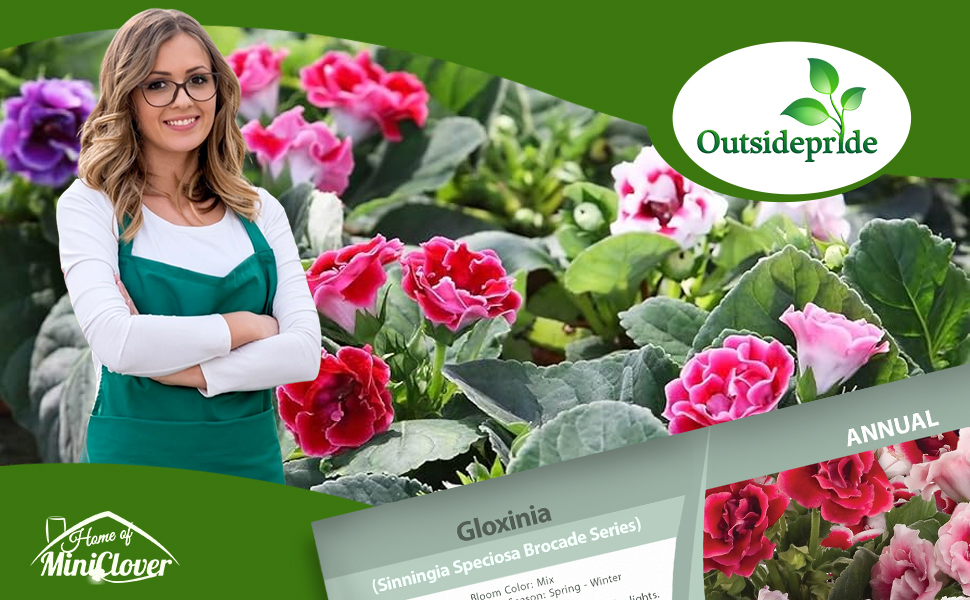


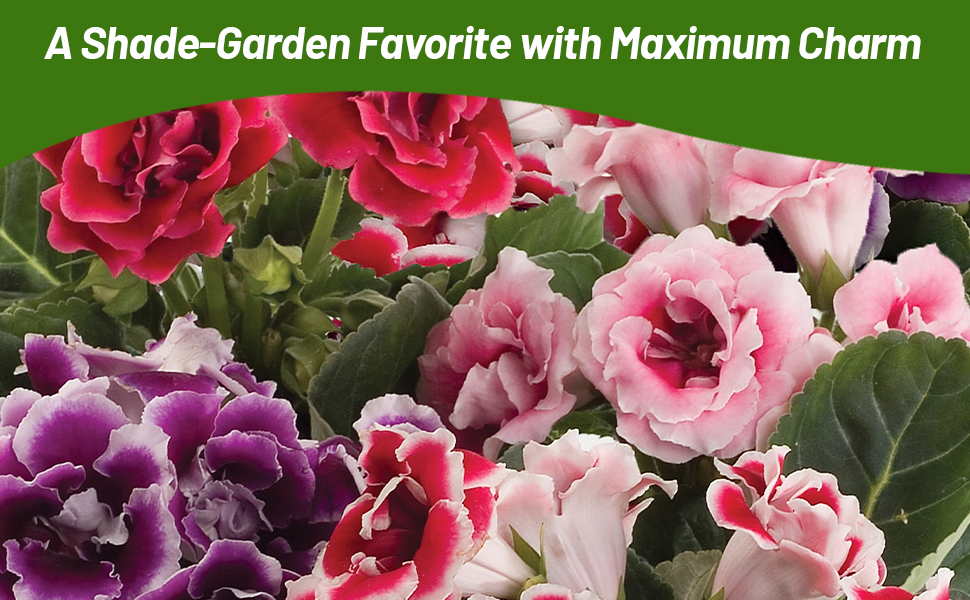

Gloxinia (Sinningia Speciosa Brocade Series) - Sow Gloxinia seeds to produce a beautiful mixture of red, blue, and white blooms. These compact Gloxinia plants blossom four to six months after sowing. They will flower for about 2 months, go dormant for about 2 months, and then begin growing again and start flowering. Gloxinias make a great house plant, giving wonderful, colorful blooms! Sinningia Speciosa is often referred to as Florist's Gloxinia or Brazilian Gloxinia.
Gloxina seeds are a bit tricky to germinate and do best indoors and under lights. Do not cover the flower seeds after sowing since they need light to germinate. Sinningia Speciosa seeds should germinate in about 3 weeks at 70 - 75F degrees. Soil should be kept uniformly moist, but do not keep it saturated. Florist's Gloxinia care includes avoiding watering the crown of the plant as this might cause the plant to rot, and use water that is at room temperature for watering. The Brazilian Gloxinia plant needs lots of light, but no direct light. Gloxinias do best in temperatures around 65 - 75F degrees, especially when they are blooming. After blooming, keep watering to a minimum and don't fertilize.
Common Questions
Do I need to prune my gloxinia?
To encourage a longer bloom season, you will need to deadhead your spent flowers. After the bloom period is over and your plant enters dormancy, prune back any dead or dying foliage.
My leaves are dropping, what do I do?
This can occur from sudden temperature changes such as drafts.
My leaves look scorched, why?
Direct sunlight can burn the leaves of your gloxinia, causing them to scorch and crisp.
My flowers are losing their vibrancy, what do I do?
This is typically caused by inadequate light move your plant to an area with more light but not direct sunlight.
Planting Directions
TEMPERATURE
55 - 65F
AVERAGE GERM TIME
14 - 21 days
LIGHT REQUIRED
Yes
DEPTH
Surface sow seed and light cover no more than 1/8 inch deep
SOWING RATE
3 - 5 seeds per cell or approximately 5000 seeds covers 100 square feet
MOISTURE
Keep seeds moist until germination
PLANT SPACING
8 inches
Leptosiphon Mix (Leptosiphon Hybrida French Hybrids Mix) - Start Leptosiphon seeds to start these dainty little flowers. Leptosiphon French Hybrids has the synonymous botanical name Linanthus androsaceus. This low-growing annual has fern-like foliage and hundreds of sweet little half inch star-shaped flowers that shine out from the foliage. The colors are mixed and bright in shades of rose, yellow, orange and cream. Leptosiphon uses include edging the front of the flower bed, containers, edging a pathway, or as a ground cover. Commonly known as False Baby Stars, this annual is lovely if it is allowed to spill over the edges of rocks or containers. It makes a carpet of color and is stunning!
Grow Leptosiphon seeds directly outside in a prepared seedbed after frost danger has passed. Press the flower seed into the soil and lightly cover. False Baby Stars flowers perform best in full sun, and they prefer rich, well-draining soil.































